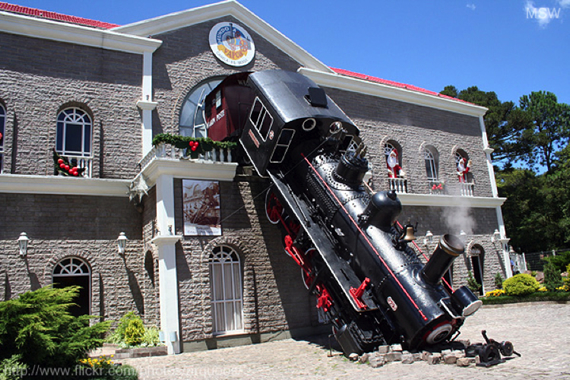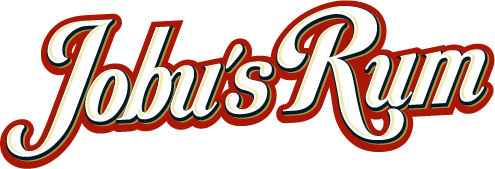Lately we’ve been covering the Copa Libertadores campaign of Nacional, my favorite Uruguayan fútbol team. Today, they are preparing to face off against Boca Juniors in the group stage again. El Bolso, our new Uruguayan fútbol correspondent (although he’s not limited to that), presents the first installment of his new series, The History of Club Nacional.
Welcome to the first of a series of posts about my favorite soccer club, the Club Nacional de Football (Nacional, for short). Nacional plays in the Uruguayan first division and is one of the two most popular teams in the country. The other is hated rival, Peñarol (boo!). These two teams dominate Uruguayan soccer, accounting for about 85% of all national titles and a similar percentage of fans. Think Real Madrid and Barcelona, only more so; or imagine Major League Baseball if it were composed of the Red Sox, the Yankees, and a bunch of mid-level minor league teams, and the Red Sox had won a 20 or so more World Series. On the field, smaller teams have begun to catch up, led by Defensor Sporting and Danubio (3 titles combined since 2000, or one more than Peñarol has managed in that time), but in the stands there is no contest. The two fan bases constantly vie for the title of most popular, often calling themselves “la mitad más uno” (half plus one). Of course, we all know that the nickname is only correct when used by the Nacional fans.
The Birth of a Champion

Nacional was formed in 1899, the product of a merger between Uruguay Athletic Club and Montevideo Football Club. A few interesting things about the club:
- It was founded entirely by Uruguayans, rather than immigrants from the United Kingdom, making it the first native club in Uruguay; hence the name, Club Nacional de Football (National Soccer Club).
- The founders were mostly university students from relatively privileged backgrounds, as opposed to the lower class immigrant workers that made up the core of the existing teams (for example, reigning big shot CURCC, considered by some as an earlier incarnation of Peñarol, was founded and managed by a British railroad company exclusively for their employees). It wasn’t until a couple of decades later that Nacional would recruit from those lower classes, and it took a devastating smallpox epidemic to bring that about. This is why, to this day, some still think of Nacional as the club of the elite, and Peñarol as the favorite of the masses.
For the club’s home, the founders chose a place famous as the launching pad for the first (and unsuccessful) Uruguayan independence movement, led by General José Artigas; they borrowed the team’s colors — red, white, and blue — from Artigas’s flag.. Initially they played in red shirts, although they soon switched to the now famous all white because the red jerseys tended to fade in the wash and therefore were too expensive to maintain. Today, the red jersey is still the alternative kit. The shirts had a pocket sewn onto the left breast, decorated with the team’s shield. This led to the traditional nickname of bolsilludo (which means “having pockets”) and the shortened form, bolso, still in use today.
Never Gonna Run Around and Desert You (Uruguayan National Team)

Nacional joined the largest amateur league in 1901, in time for the league’s second-ever season, and won the championship in 1902 and 1903, quickly establishing itself as CURCC’s main rival. It gained increased notoriety in 1903, when Uruguay needed to form a national team to face powerful Argentina in the return game of a friendly series.
The first match, played in Uruguay, had ended 6-0 in favor of the Argentines, and most expected the team to do no better in the second leg. As the story goes, the association picked the players for this new challenge, and CURCC was not happy with the number of Nacional players chosen (a majority), so it withdrew its players. This began a storied tradition of CURCC and Peñarol turning their backs on the national team when it needed them most. Faced with the cancellation of the match and a huge loss of face, Nacional stepped up and offered to represent the country by itself.
The team, seen by most as sacrificial lambs, traveled to Buenos Aires and faced the Argentines on September 13th, coming away with a shocking 3-2 win, all three goals scored by members of Nacional’s main founding family, the Céspedes. Carlos scored the first and last goals, while his brother Bolívar netted the second one. Amílcar, the third brother, was the starting keeper, so you could say the family had a hand in all of the goals in the game. The win is celebrated by the team to this day (all the more so because it shows the traditional rivals in a bad light), wearing light blue jerseys for home games during the month of September. They do this despite the fact that the famous celeste shirt wasn’t used by the national team until 1910.
War, What Is It Good For? Nacional Titles!
Another great story from the early days is tied to the 1903 national championship, which was played almost a year late (so quit whining about a 30-minute delay during the Super Bowl). Nacional and CURCC finished the year tied in points, so a final was to be scheduled to determine the champion. Unfortunately, Uruguay was in the middle of a civil war, as happens from time to time.
Some players joined one of the two armies, and others, including two of the Céspedes brothers, fled to Argentina to avoid being drafted. CURCC, on the other hand, lost virtually no players because most were foreigners and therefore not expected to fight. Eventually, the final was set for August 28, 1904 (almost a year late). The war was still raging, and Nacional’s roster was decimated. Suspecting the League office, still controlled by Germans and Brits, was showing favoritism towards CURCC, club leaders protested, to no avail; the final would be played. Nacional got to work: it used contacts in the government of José Batlle y Ordóñez, the reigning president, to secure safe passage back to Montevideo for the Céspedes and other exiles, and to allow other players who were serving in the army to play in the game as well. The President himself issued the orders personally; welcome to South American soccer. The negotiations were conducted in secret, and no one outside of the club offices and the highest levels of government knew about them.
Nacional showed up at the field at the appointed time, with the returned players making a grand entrance and driving fans into frenzy. Despite half the squad having joined the team (literally) at the last possible moment after a year away, Nacional carried a 3-0 lead into the halftime break, with goals from –you guessed it–Carlos and Bolívar Céspedes. This time, it was Bolívar with the double and Carlos with the single. CURCC made things interesting with two second half goals, but there would be no denying Nacional on this day. If a war and an entire League office couldn’t do it, a sweaty set of sooty Brits didn’t stand a chance.

I think this is a good time to take a break. We can pick up the story in the 1920s, when Uruguay became the biggest power in World soccer, with Nacional providing many of the players that would fuel the national team’s triumphs.
- The Charrúa Report: On the Right Foot - March 14, 2017
- The Charrúa Report: Campeones! - February 14, 2017
- The Charrúa Report: 48 Is Enough - January 11, 2017
- The Charrúa Report: Nico and the Sounders - December 14, 2016
- The Charrúa Report: King of the Single Rounders - December 12, 2016
- The Charrúa Report: Senseless - December 6, 2016
- The Charrúa Report: The Bum’s Rush - November 28, 2016
- The Charrúa Report: A Bump in the Road - November 16, 2016
- The Charrúa Report: Is It Priceline Time? - November 12, 2016
- The Charrúa Report: Closer to Fine - October 13, 2016


4 thoughts on “Nacional: the Early Years”
Comments are closed.